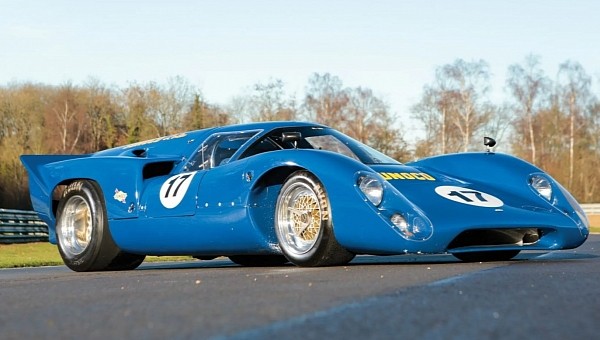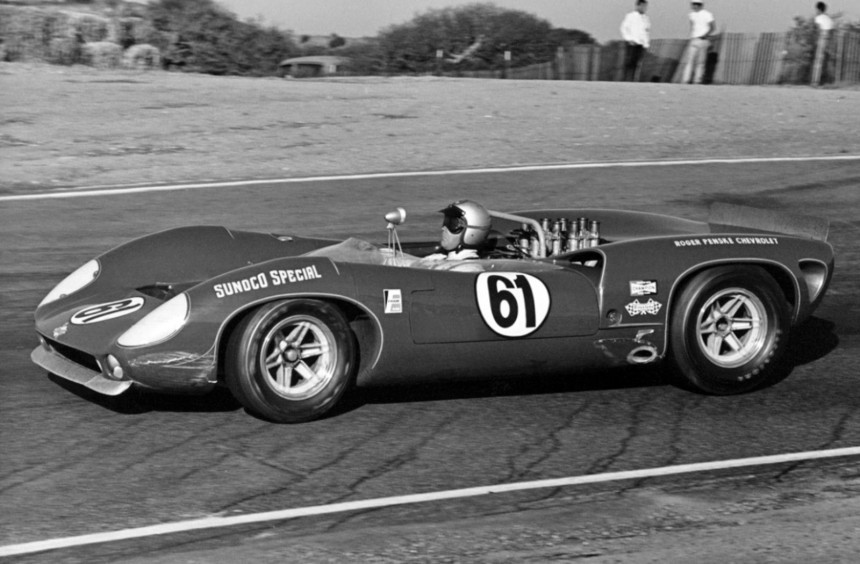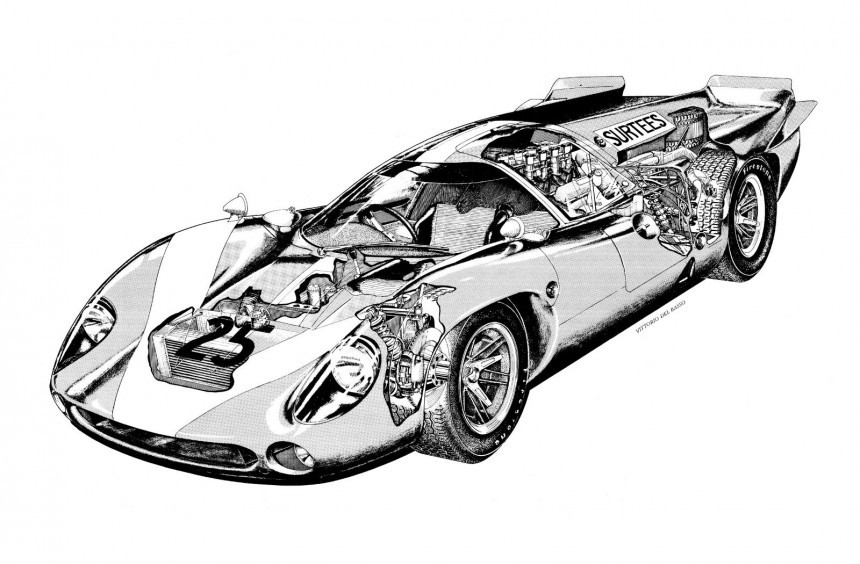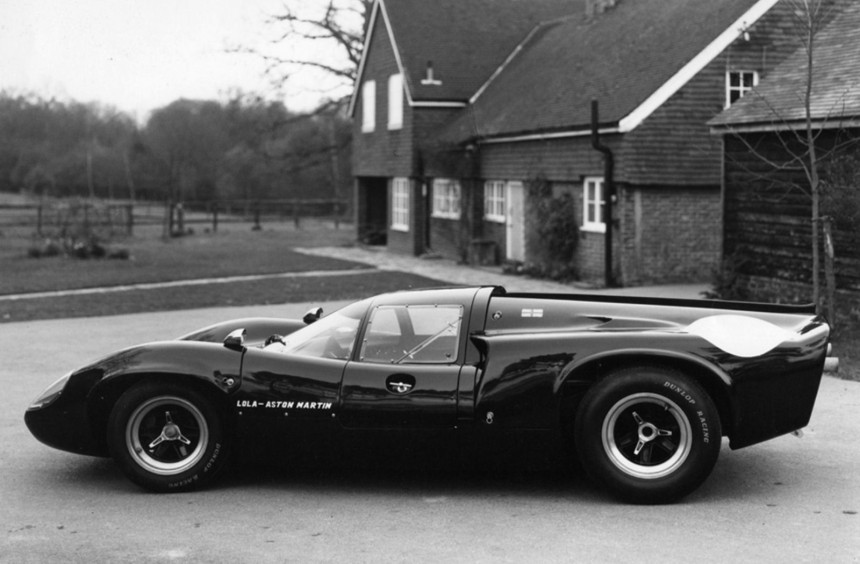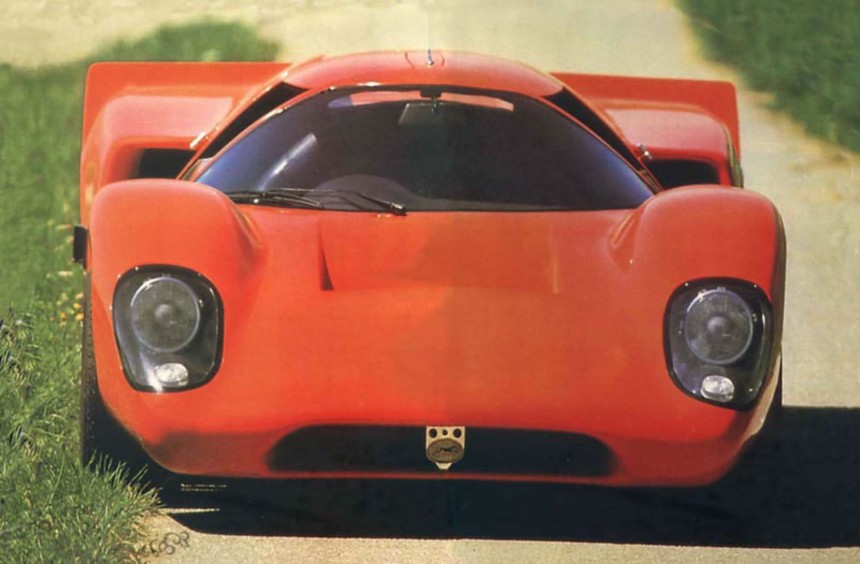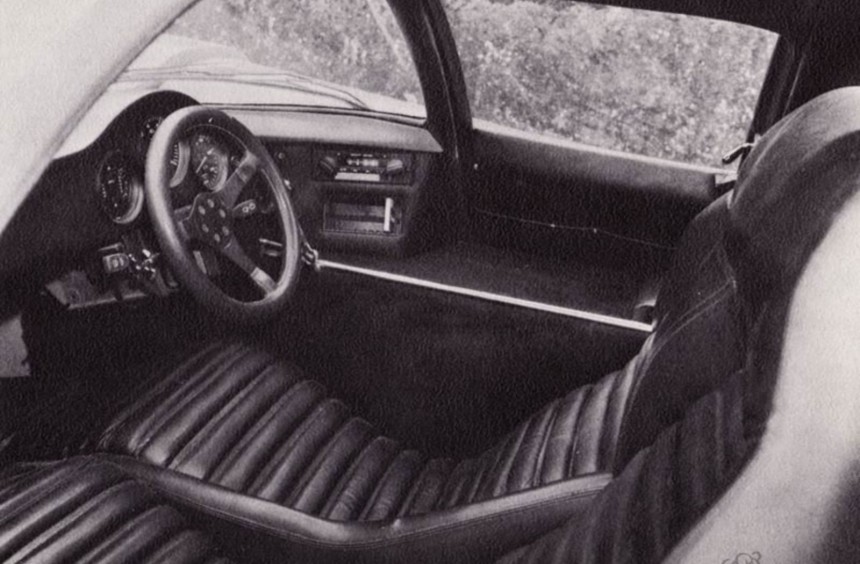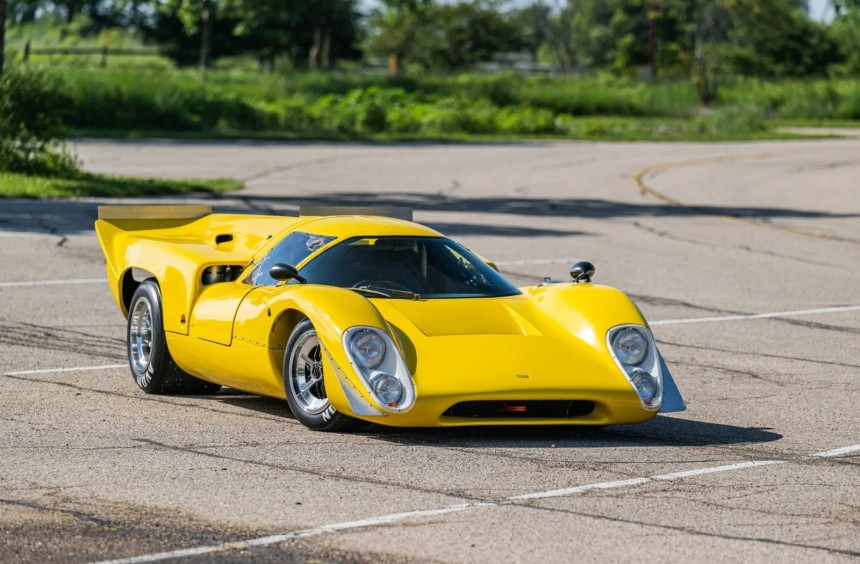A relative of the legendary Le Mans-winning Ford GT40, the long-forgotten Lola T70 was a solid endurance racer in the 1960s. However, arguably the most impressive part of its little-known story is its conversion into a road-legal supercar by the Swiss company Sbarro.
If you’re a motorsport enthusiast or you just happened to watch the 2019 flick “Ford vs. Ferrari”, you’ll recognize the name Lola as one of the companies which made the GT40 happen.
Founded in 1958 by Eric Broadley in Bromley, England, Lola Cars Ltd. started building racing cars which turned out to be very good from the get-go. In just a few years, the company was achieving success in various single-seat classes like Formula Junior, Formula 3, Formula 2, or the premier Formula 1.
With funds pouring in, Broadley decided to expand his expertise to the world of endurance racing for the 1962 season. Thus, he created the Mk6, a revolutionary GT built around an aluminum monocoque chassis with a 289-ci (4.74-liter) Ford V8 mounted in the middle.
Around the same time, Ford attempted to take over Ferrari, but after failing to do so, they sought to take revenge by ending the Italian carmaker’s hegemony at Le Mans. However, in order to quickly build a machine capable of this feat, the Blue Oval hired Lola as a subcontractor, which enabled them to start with the promising Mk6 chassis, rather than develop a car from scratch.
As many of you know by now, the legendary Carroll Shelby would later join the GT40 project and help turn the Mk6-based car into one of the most iconic racers of all time.
Before that happened, Eric Broadley worked closely with the Ford team on the early development stages of the GT40. Yet, due to disagreements with the Americans, he left the project and started building a new Lola endurance prototype.
Codenamed T70, it was initially an open-top spyder that shared more mechanical similarities with the 1964 GT40 than it did with its predecessor, the Mk6.
The new car showed a lot of promise, but Lola never managed to secure a major sponsorship deal, so all the T70s were raced by private teams with Ford or Chevy engines.
In its early days, the T70’s most notable achievement was winning the Monterey Grand Prix, at Laguna Seca, on 17 October 1965, with Walt Hansgen behind the wheel.
A year later, Lola started rolling out revised Mk II chassis. Some of these cars took part in the inaugural Can-Am season and managed to win five out of six races. Three of the wins came courtesy of the illustrious John Surtees, who was crowned champion at the end of the season.
Although development continued with the Mk III (1967) and Mk IIIB (1968), which were now close-top coupes, the T70 struggled to pose a real threat to the likes of Ford or Ferrari on the premier endurance racing stage. Its only moment of glory came in 1968, with a one-two finish in the 24 Hours of Daytona.
Legend has it that during the late 1960s, Eric Broadley toyed with the idea of building a road-legal version of the T70, but with his company’s staff busy developing race cars. During a visit to England, his friend Franco Sbarro offered to take on the project and an agreement was quickly reached.
At the time, Sbarro’s full-time job was as chief mechanic for the famed Team Filipinetti which competed with Ferrari P3s and Ford GT40s. Since the latter car was closely related to the T70 and Sbarro was already known for building some fantastic road-legal GT40 race replicas, Broadley knew he was the right man for the job.
At first, Broadley shipped a single race-spec Mk III to the talented mechanic, and a year later, the first street-legal T70 was born.
In addition to the initial street-legal T70, Sbarro would go on to build another twelve with Mk III aluminum monocoque chassis sourced from Lola.
The ventilated disc brakes and suspension system were retained, yet the latter was slightly tuned for road use. As for the engine, all but two of the street-legal T70s were equipped with Chevy V8s, just like their competition-spec counterparts. The naturally-aspirated engines displaced 306 ci (5.0 liters), featured four Webber 48 carbs, and could spit out close to 500 hp. The examples that broke with tradition were outfitted with a Porsche-sourced 3.3-liter turbo and a Ferrari V12.
The cars also came with the same fiberglass bodies as the racers. Initially stylized by Peter Bohanna and Jim Clarke of Specialised Mouldings, the structures only received minor changes in order to make them roadworthy. The only true difference was noticeable inside, where the cockpit now featured leather or vinyl upholstery, air conditioning, and, in some cases, a stereo system.
Even with these minor changes, a street-legal Mk III had a reported dry weight of around 1,984 lb (900 kg). Equipped with the Chevy engine, it meant that it could sprint to 60 mph (97 kph) in 5.5 seconds and reach a top speed that bordered 200 mph (321 kph).
With no safety features or electronic aids and few changes that distinguished it from the racing version, the Sbarro T70 was an ill-tempered beast that could only be kept in check by experienced drivers. Moreover, the cockpit was hard to access, whereas side and rear visibility were poor, to say the least. The car was certainly not daily driving material, but rather a racecar that you can take to the track on weekends, do some really fast laps, and then drive home in it.
Because they weren’t built by a prestigious manufacturer and don’t come with many achievements to their name, T70s never reached the astronomical values of race-bread Ferraris or Fords from the same era.
Depending on its condition, history, and, of course, authenticity, a competition-spec T70 is currently valued at around $150,000 to $350,000. As for the street-legal versions, the value is about the same. One example is chassis SL-106, which went under the hammer at an RM Sotheby’s auction in France eight years ago fetching less than $200,000.
Another, more recent example is the yellow car featured in the gallery. It popped up on the Bring a Trailer platform last year and sold for $275,000, which is still cheaper than most brand-new Ferrari or Lamborghini models.
While it isn’t one of the original Mk III Street cars built by Sbarro, but an Mk IIIB converted for the road by the same company, it still is a fascinating example of a 1960s racecar that you can drive on public roads.
I don’t know about you, but I would choose one of these beasts over a modern supercar any day. Yes, it’s prone to kill you if you’re not careful, but if you get to tame it, I’m sure it delivers a raw, analog driving experience that no modern ride can match. While footage of an actual street-legal T70 is scarce, you can get a clue of what it’s like driving one on a race track in the YouTube video below, by Motor Sport, where an Mk IIIB competes in a Peter Auto’s Classic Endurance Racing championship stage held at Imola.
Founded in 1958 by Eric Broadley in Bromley, England, Lola Cars Ltd. started building racing cars which turned out to be very good from the get-go. In just a few years, the company was achieving success in various single-seat classes like Formula Junior, Formula 3, Formula 2, or the premier Formula 1.
With funds pouring in, Broadley decided to expand his expertise to the world of endurance racing for the 1962 season. Thus, he created the Mk6, a revolutionary GT built around an aluminum monocoque chassis with a 289-ci (4.74-liter) Ford V8 mounted in the middle.
From the GT40 project to the T70
As many of you know by now, the legendary Carroll Shelby would later join the GT40 project and help turn the Mk6-based car into one of the most iconic racers of all time.
Before that happened, Eric Broadley worked closely with the Ford team on the early development stages of the GT40. Yet, due to disagreements with the Americans, he left the project and started building a new Lola endurance prototype.
Codenamed T70, it was initially an open-top spyder that shared more mechanical similarities with the 1964 GT40 than it did with its predecessor, the Mk6.
Despite continuous development, the T70 saw limited success
In its early days, the T70’s most notable achievement was winning the Monterey Grand Prix, at Laguna Seca, on 17 October 1965, with Walt Hansgen behind the wheel.
A year later, Lola started rolling out revised Mk II chassis. Some of these cars took part in the inaugural Can-Am season and managed to win five out of six races. Three of the wins came courtesy of the illustrious John Surtees, who was crowned champion at the end of the season.
Although development continued with the Mk III (1967) and Mk IIIB (1968), which were now close-top coupes, the T70 struggled to pose a real threat to the likes of Ford or Ferrari on the premier endurance racing stage. Its only moment of glory came in 1968, with a one-two finish in the 24 Hours of Daytona.
Becoming a street-legal race car
At the time, Sbarro’s full-time job was as chief mechanic for the famed Team Filipinetti which competed with Ferrari P3s and Ford GT40s. Since the latter car was closely related to the T70 and Sbarro was already known for building some fantastic road-legal GT40 race replicas, Broadley knew he was the right man for the job.
At first, Broadley shipped a single race-spec Mk III to the talented mechanic, and a year later, the first street-legal T70 was born.
An absolute beast that took a lot of courage and skill to tame
The ventilated disc brakes and suspension system were retained, yet the latter was slightly tuned for road use. As for the engine, all but two of the street-legal T70s were equipped with Chevy V8s, just like their competition-spec counterparts. The naturally-aspirated engines displaced 306 ci (5.0 liters), featured four Webber 48 carbs, and could spit out close to 500 hp. The examples that broke with tradition were outfitted with a Porsche-sourced 3.3-liter turbo and a Ferrari V12.
The cars also came with the same fiberglass bodies as the racers. Initially stylized by Peter Bohanna and Jim Clarke of Specialised Mouldings, the structures only received minor changes in order to make them roadworthy. The only true difference was noticeable inside, where the cockpit now featured leather or vinyl upholstery, air conditioning, and, in some cases, a stereo system.
With no safety features or electronic aids and few changes that distinguished it from the racing version, the Sbarro T70 was an ill-tempered beast that could only be kept in check by experienced drivers. Moreover, the cockpit was hard to access, whereas side and rear visibility were poor, to say the least. The car was certainly not daily driving material, but rather a racecar that you can take to the track on weekends, do some really fast laps, and then drive home in it.
Sbarro T70s are currently cheaper than most brand-new supercars
Depending on its condition, history, and, of course, authenticity, a competition-spec T70 is currently valued at around $150,000 to $350,000. As for the street-legal versions, the value is about the same. One example is chassis SL-106, which went under the hammer at an RM Sotheby’s auction in France eight years ago fetching less than $200,000.
Another, more recent example is the yellow car featured in the gallery. It popped up on the Bring a Trailer platform last year and sold for $275,000, which is still cheaper than most brand-new Ferrari or Lamborghini models.
While it isn’t one of the original Mk III Street cars built by Sbarro, but an Mk IIIB converted for the road by the same company, it still is a fascinating example of a 1960s racecar that you can drive on public roads.
I don’t know about you, but I would choose one of these beasts over a modern supercar any day. Yes, it’s prone to kill you if you’re not careful, but if you get to tame it, I’m sure it delivers a raw, analog driving experience that no modern ride can match. While footage of an actual street-legal T70 is scarce, you can get a clue of what it’s like driving one on a race track in the YouTube video below, by Motor Sport, where an Mk IIIB competes in a Peter Auto’s Classic Endurance Racing championship stage held at Imola.
